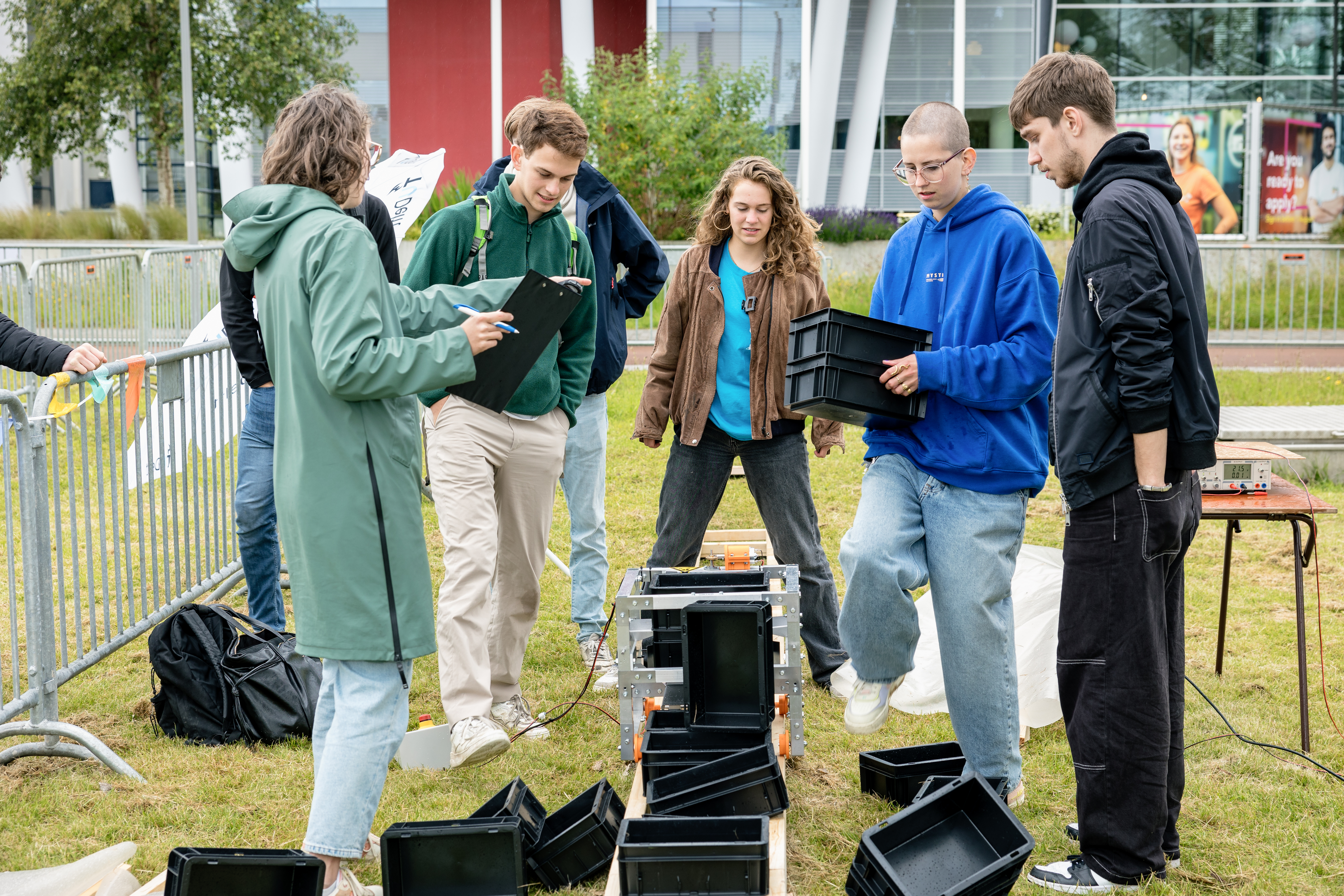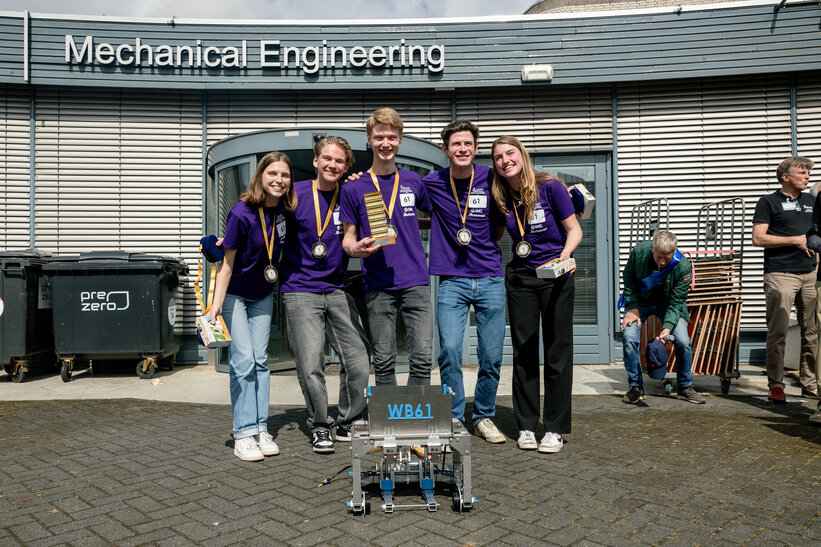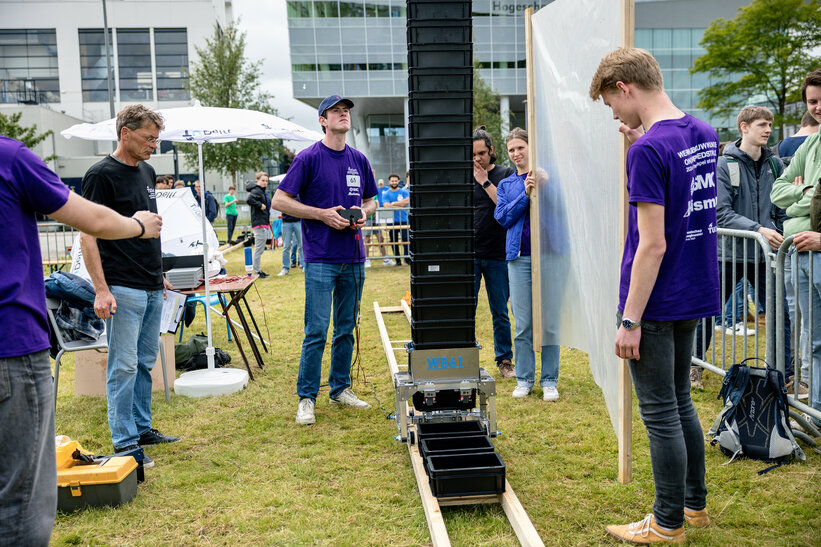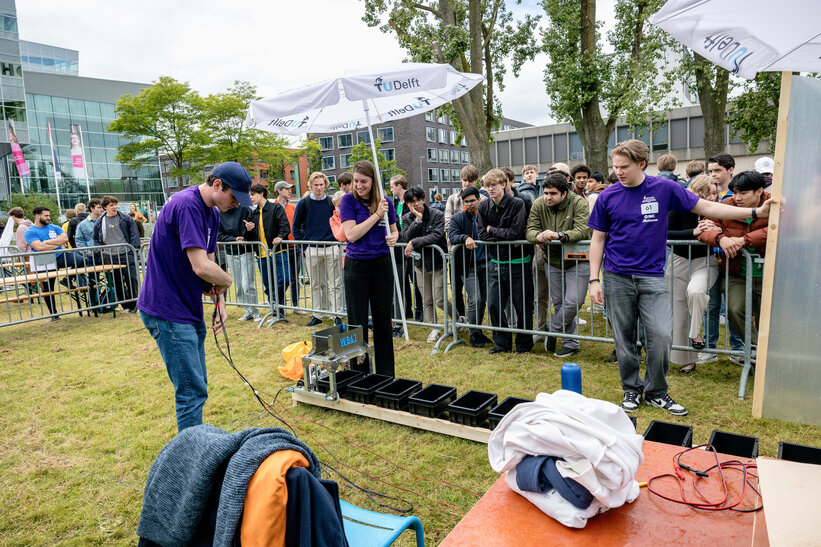Learning without knowing it at the Mechanical Engineering Design Competition
Some 570 first-year mechanical engineering students used their crate stacker to stack almost 2,000 crates during the design competition on 12 June. The eight best stackers went through to the final, where they had to stack up to 25 crates. The competition is the culmination of the third design course of the programme and challenges students to apply all the knowledge they have gained over the past year. Project teachers guide the students through the entire process, from the sketch to the production of a real crate stacker.
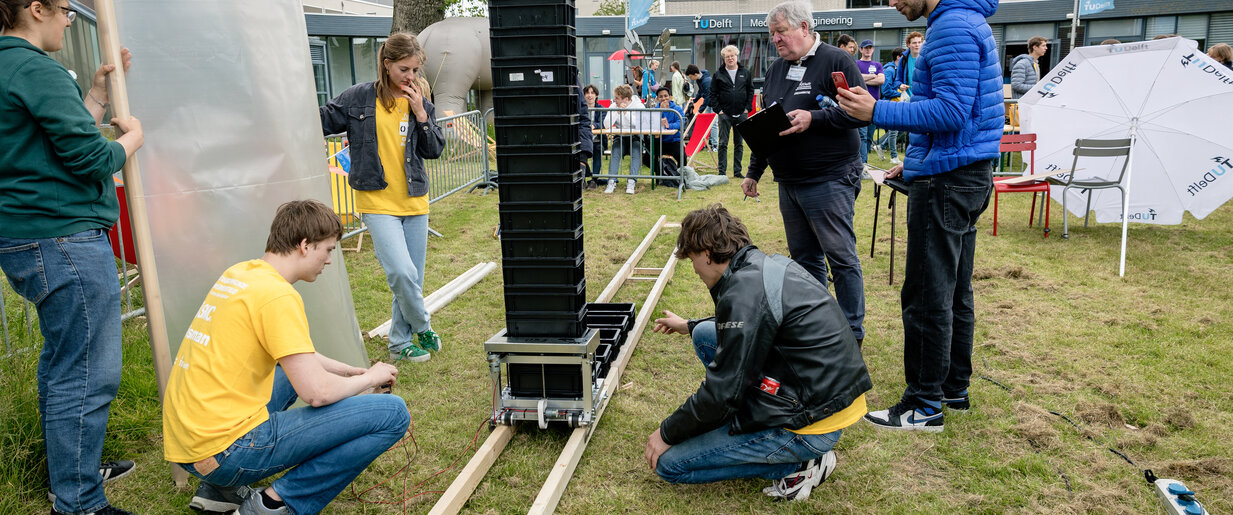
One challenge, dozens of solutions
The students are given free rein with a few restrictions, and the project teachers guide and advise the groups of about six students on a weekly basis. This year’s task involved two movements: a lifting movement to stack the crates and a forward movement to move the crates along a track. There was an increasing stability problem; the higher the stack, the more difficult it was to keep the structure stable.
Erik Frikkee, project teacher: ‘It was exciting to see whether the task wasn’t too difficult this year. The solution requires a powerful machine that moves calmly and stably.’ Although everyone had the same task, the technical solutions and implementations were very different. In the end, almost everyone turned up to the design competition with a working crate stacker.
Despite a few drops of rain, the atmosphere was good. Giuseppe Radaelli, competition director and himself a project teacher: ‘I’m delighted by the students’ conversations during the day. As a competition director, I walked around a lot and heard people talking about how they were trying to understand other groups’ constructions. That’s learning without even realising it!’
A varied team provides guidance in all areas
The close-knit group of project teachers who supervise the students consists of a ‘colourful mix’ of lecturers. They’re lecturers from the programme, from other programmes and also people from industry. They all share a knowledge and love of mechanics and design – and, of course education. Giuseppe: ‘It’s a balanced team, with all different types. The great thing is that everyone knows how to find their role. Regine (lecturer, chairman of the project teachers and organiser of the Design Competition) is exceptionally good at keeping everyone together. I supervise a few groups myself. It keeps me aware of how lectures are being received.’
As a competition director, I walked around a lot and heard people talking about how they were trying to understand other groups’ constructions. That’s learning without even realising it!
Project teacher Giuseppe Radaelli
Erik: ‘We all have different technical backgrounds. Mine is industry, but I also have eight years’ experience as a lecturer; that way, I make sure students don’t just learn theory. I like to share my practical experiences. If students get stuck, we try to find out what’s wrong together. After all, it’s not a problem if something goes wrong. That’s why we’re there. The best part of this work is helping young people move on!’
Regine Vroom: ‘The best moment is when you see the penny drop with a student. Suddenly it hits them, they get it and they can move on. It’s usually at the project tables that these teachers see this happen. Giuseppe: ‘As a project teacher, you’re accessible to the students. You’re not only accessible through official channels. Sometimes you just walk down the corridor past a team at the table and ask how things are going.’
The best crate stacker
All the hard work came together on a great day. Eight teams competed in the final, all stacking 25 crates into a pile 3 metres high. In the end, it was Team WB061 who came out on top. They stacked all 25 crates in 2:35 minutes and drove to the end of the course. But that’s not all. This machine stacked quickly and accurately, drove smoothly and stably, and had convenient controls. Last but not least, its movements were reliable and reproduceable.


